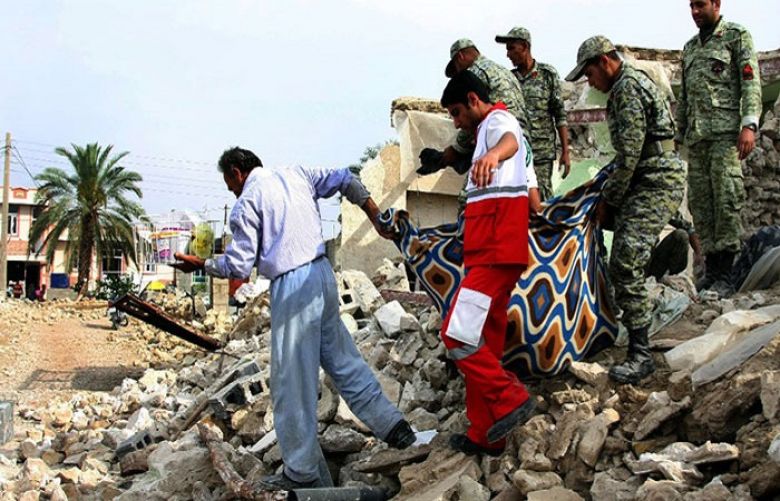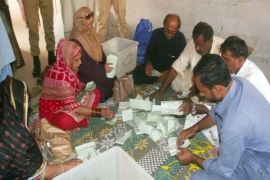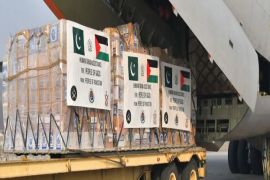A powerful 7.3-magnitude earthquake has hit the border region between Iran and Iraq, killing at least 339 people, almost all of them in Iran.
The epicenter of the quake, which occurred at around 09:18 pm local time on Sunday (0010 GMT on Monday), was 32 kilometers south of the Iraqi city of Halabja, in Iraqi Kurdistan, and just across the border from Iran, according to the United States Geological Survey (USGS).
But the highest casualties occurred in the town of Sarpol-e Zahab, in Iran’s Kermanshah Province.
According to the National Disaster Management Organization of Iran, 328 people were confirmed dead as of Monday noon. Some 3950 others were also injured.
The organization says power cuts have been reported in Kermanshah Province. A number of villages in western Iran have also seen destruction of varying degrees.
Leader orders swift rescue operations
Soon after the quake occurred, Leader of the Islamic Revolution Ayatollah Seyyed Ali Khamenei issued a message calling on all Iranian officials and institutions to “rush to the aid of those affected in these early hours [after the incident].”
The Leader said the country’s entire range of capabilities had to be used swiftly to prevent a further rise in the death toll.
Ayatollah Khamenei called on Iran’s Armed Forces to help with removing the rubble and transferring the injured to medical centers.
Separately, Iranian President Hassan Rouhani spoke on the phone with Iranian Interior Minister Abdolreza Rahmani-Fazli on Sunday night, who briefed the president on the latest updates. President Rouhani then issued the necessary directives to facilitate and accelerate rescue operations.
Three days of mourning have been announced in Kermanshah.
The earthquake was felt in cities in several other Iranian provinces, including as far away as in the capital, Tehran.
The quake also shook the Iranian provinces of Kordestan, Ilam, Khuzestan, Hamedan, West Azarbaijan, East Azarbaijan, Lorestan, Qazvin, Zanjan, and Qom.
The quake was also felt in other regional countries, including Turkey, Kuwait, Armenia, Jordan, Lebanon, Saudi Arabia, Qatar, and Bahrain.
But the casualties and damage were limited to Iran and Iraq.
Government, military officials on ground zero
President Rouhani has been scheduled to travel to Kermanshah Province on Tuesday to oversee the rescue work.
Rahmani-Fazli, the Iranian interior minister, and Health Minister Hassan Ghazizadeh Hashemi have already flown to Kermanshah to personally supervise the rescue operations.
Commander of Iran’s Army Major General Abdolrahim Mousavi has also arrived in Sarpol-e Zahab, one of the worst-affected areas, to oversee Army rescue operations in the region.
The chief commander of the Islamic Revolution Guards Corps (IRGC), Major General Mohammad Ali Jafari, has also traveled there.
So has Iran’s Police chief, Brigadier General Hossein Ashtari.
Rescue work
First responders have been using sniffer dogs to look for potential survivors under the rubble.
Hospitals in Tehran have been put on alert to treat those of the wounded who are transferred to the capital. At least 43 ambulances, four ambulance buses, and 130 emergency technicians have been stationed in the Mehrabad Airport in Tehran for a quick transfer of the victims to hospitals.
At least 100 medics have also been dispatched to the affected areas. The Iranian Air Force, too, has deployed helicopters to accelerate the transfer of the wounded.
Iranian people have been flocking to the headquarters of the Iranian Blood Transfusion Organization to donate blood to the victims of the earthquake.
Foreign condolences
Meanwhile, foreign dignitaries have been offering condolences to and sympathies with the Iranian government and people over the earthquake.
Among them are German Ambassador to Iran Michael Klor-Berchtold, Turkish Prime Minister Binali Yildirim, European Union (EU) High Representative Federica Mogherini, and the United Nations Secretary General Antonio Guterres.
In Iraq
Reports said 11 people had been killed in Iraq. Some 130 Iraqis were also injured.
In Iraq, the most extensive damage was in the town of Darbandikhan, 75 kilometers east of the city of Sulaymaniyah, in the semi-autonomous Kurdistan Region.
According to Kurdish Health Minister Rekawt Hama Rasheed, over 30 people were wounded in the town. “The situation there is very critical,” he said.







